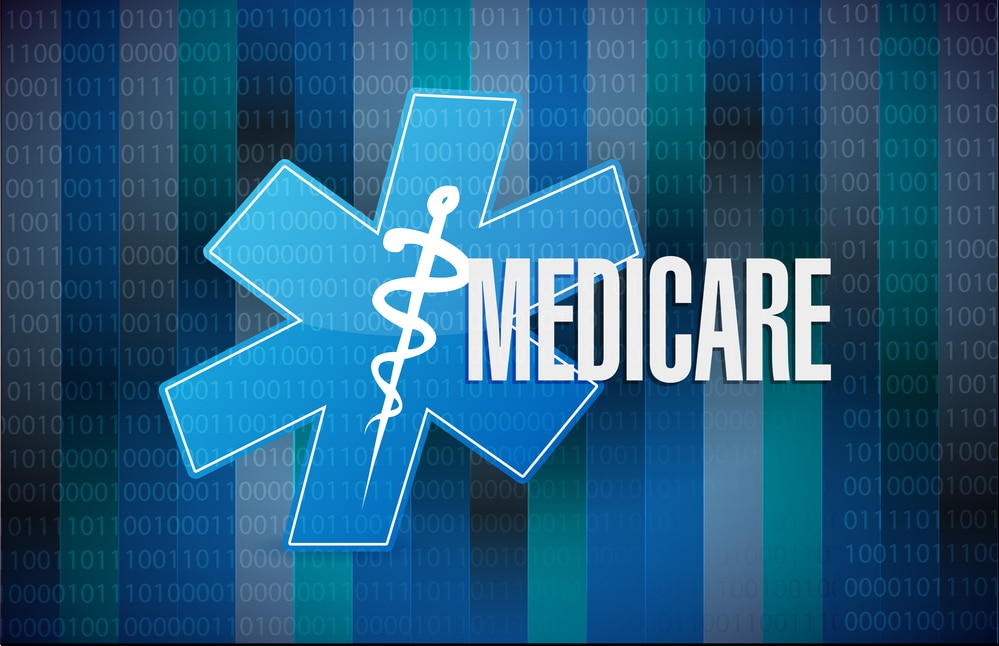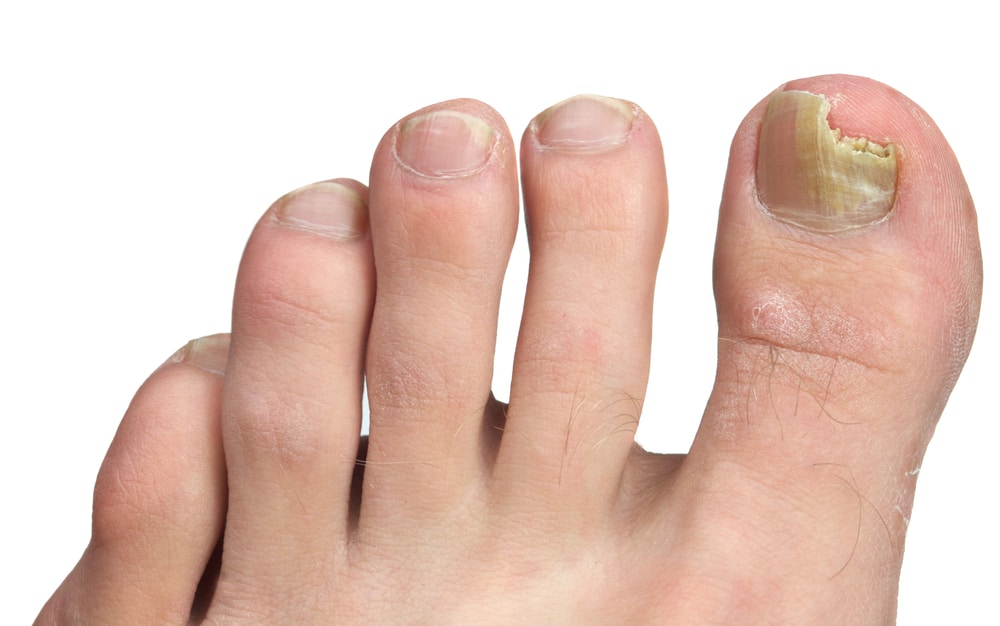Call to speak to a Licensed Insurance Agent
Mon - Fri 8am – 8pm EST; Sat - Sun 10am - 6pm EST

If you’ve got toenail fungus and are considering laser treatment, will Medicare cover it? Yes, Medicare can cover toenail fungus laser treatment. But there’s a catch.

Medicare doesn’t always cover the costs in every situation. There are conditions that apply. Below you’ll get the details about Medicare’s rules for covering this treatment.
We understand toenail fungus is both stubborn and frustrating. A lot of folks are curious if Medicare will foot the bill for laser treatment, a popular and effective way to fight this pesky condition.
In this article, you’ll find out:
Keep reading to arm yourself with the knowledge you need to make the best choice for your treatment.

The short answer is yes; Medicare will cover the cost of laser treatment for toenail fungus (treatment is also called nail debridement). But not 100% of the time. As is often the case with Medicare, certain conditions have to be met in order for Medicare to pay for your laser treatment for toenail fungus.
Below we look at what these are so you know what to expect.
Original Medicare (Medicare Part A and Part B) provides coverage for laser treatment for toenail fungus.
That said, Parts A and B typically don’t provide coverage for routine foot services and care.
However, Original Medicare provides coverage for podiatry services like tests and treatment if they are considered medically necessary. Laser treatment for toenail fungus usually falls under this category.

Coverage for laser treatment for toenail fungus is provided by Medicare Part B. Medicare Part B provides coverage for laser treatment for toenail fungus as most of the time it takes place in an outpatient setting.
For toenail fungus treatment, Medicare Part B provides coverage for doctor’s/podiatrist’s visits, outpatient care, diagnosis, and treatment.
Aside from laser treatment, Medicare Part B also provides coverage for toenail debridement. Toenail debridement is the removal of a dead nail as well as debris of an infected nail.
Medicare Part B covers 80 percent of the costs of laser treatment for toenail fungus. You will pay for the remaining 20 percent.
Medicare Advantage plans (Medicare Part C) also provide coverage for laser treatment for toenail fungus. These Part C plans will cover everything that Original Medicare covers (by law they have to). They also offer additional benefits as well.
Medicare Part C plans that include prescription drug plans will also provide coverage for medications that your healthcare provider may prescribe to you to treat your toenail fungus.
Laser treatment for toenail fungus ranges from a few hundred dollars to over $1,000. Generally, you’ll see prices range from $300 to $1200.
The cost will vary based on a few main factors:
Toenail fungus, also known as onychomycosis or tinea unguium, is a common issue that affects your toenails and is caused by fungi.
The culprit is usually a kind of fungus that loves warm, damp places like the inside of your shoes, called a dermatophyte. You can also get it from touching surfaces that someone with the fungus has touched.
In the early stages of toenail fungus, you may spot a white or yellowish area under your nail. Over time, the nail may change color, get thicker, and could even break or separate from the skin.
While toenail fungus may not be dangerous, it’s certainly unsightly and can be uncomfortable. If you leave it untreated, it can cause more issues like ingrown toenails and skin infections around the affected area.
Ignoring the problem can lead to complications like painful ingrown toenails, skin infections, and even difficulty wearing shoes comfortably.
When it comes to treating toenail fungus, you’ve got options. You can go for topical creams, oral medication, or even laser treatment.
If you’re concerned about toenail fungus, your best bet is to consult a doctor or foot specialist for a proper diagnosis and personalized treatment plan.
Laser treatment for toenail fungus uses specialized light to heat up the nail and destroy the fungus. The laser is made to only target the fungus, leaving the surrounding skin unharmed. The heat from the laser kills the fungus, which eventually falls off the nail.
Laser treatment is commonly pain-free and effective, particularly when other methods have been unsuccessful. The results can last for up to two years, making it a durable option. The treatment is also generally considered safe, with limited side effects.
Laser treatment is often more effective for toenail fungus compared to creams or pills. However, it’s not easily available. While generally safe and reliable, it can also be quite expensive, and there’s a chance your insurance won’t cover the cost.
The price of laser treatment can change depending on the laser used, the severity of your infection, and how many sessions you’ll need. Before you schedule an appointment, it’s a good idea to check whether your insurance will cover the cost.
While laser treatment can be really effective in clearing up the fungus, it’s not a surefire cure. To get the best results, always follow your doctor’s recommendations after the treatment.
So, does Medicare help pay for laser treatment for toenail fungus? Yes, but only sometimes.
Medicare will help pay if you really need the treatment and it’s medically necessary. But you won’t get help to pay for normal foot care.
If you go for laser treatment, Medicare Part B can help pay 80% of the bill. You’ll need to pay the rest. Laser treatment can be quite pricey, sometimes up to $1,000 or more!
Before you decide to get the treatment, it’s good to know how much you will need to pay, even with Medicare’s help. Always talk to your doctor about what treatment is best for you and how much it will cost.
Remember, there are other ways to treat toenail fungus too, so pick the one that’s best for your health and your wallet!
Laser therapy is a reasonably effective treatment for toenail fungus. Studies show 30% – 60% cure rates and another showed a 91% clinical improvement. The treatment also has minimal side effects.
Most people need 1 to 3 laser treatments for toenail fungus, with breaks of 4 to 8 weeks between each session. It can take as short as 3 months or as long as over a year to see the toenail get better after laser treatment.
There are a range of options including specific lotions, soaks and medication. Microwave therapy helps your body fight infections with short bursts of radiation. Laser treatment is another increasingly popular option.
For nail fungus, visit a dermatologist or podiatrist. However, toenails should be seen by a foot doctor. Foot disorders, particularly toenail fungus, are their specialty. Although toenail fungus may seem minor, it can cause serious health issues.
Apart from laser treatment, Terbinafine and Itraconazole are frequent toenail fungal treatments. For several months, you take these once or twice a day. Doctors can prescribe Diflucan for fast results. Natural therapies may work but take longer.
Laser treatment usually doesn’t hurt and is often effective, especially when other treatments haven’t worked. It’s also considered safe with not many side effects.
Note: Medicare coverage changes all the time. And your specific coverage may vary from plan to plan for Medicare Advantage and Medigap plans. Always be sure to double check with your health care provider and/or Medicare insurance provider about what your plan covers and what it does not.
Also, you can check out other articles in this series including Medicare coverage for SoClean and does Medicare cover Purewick.